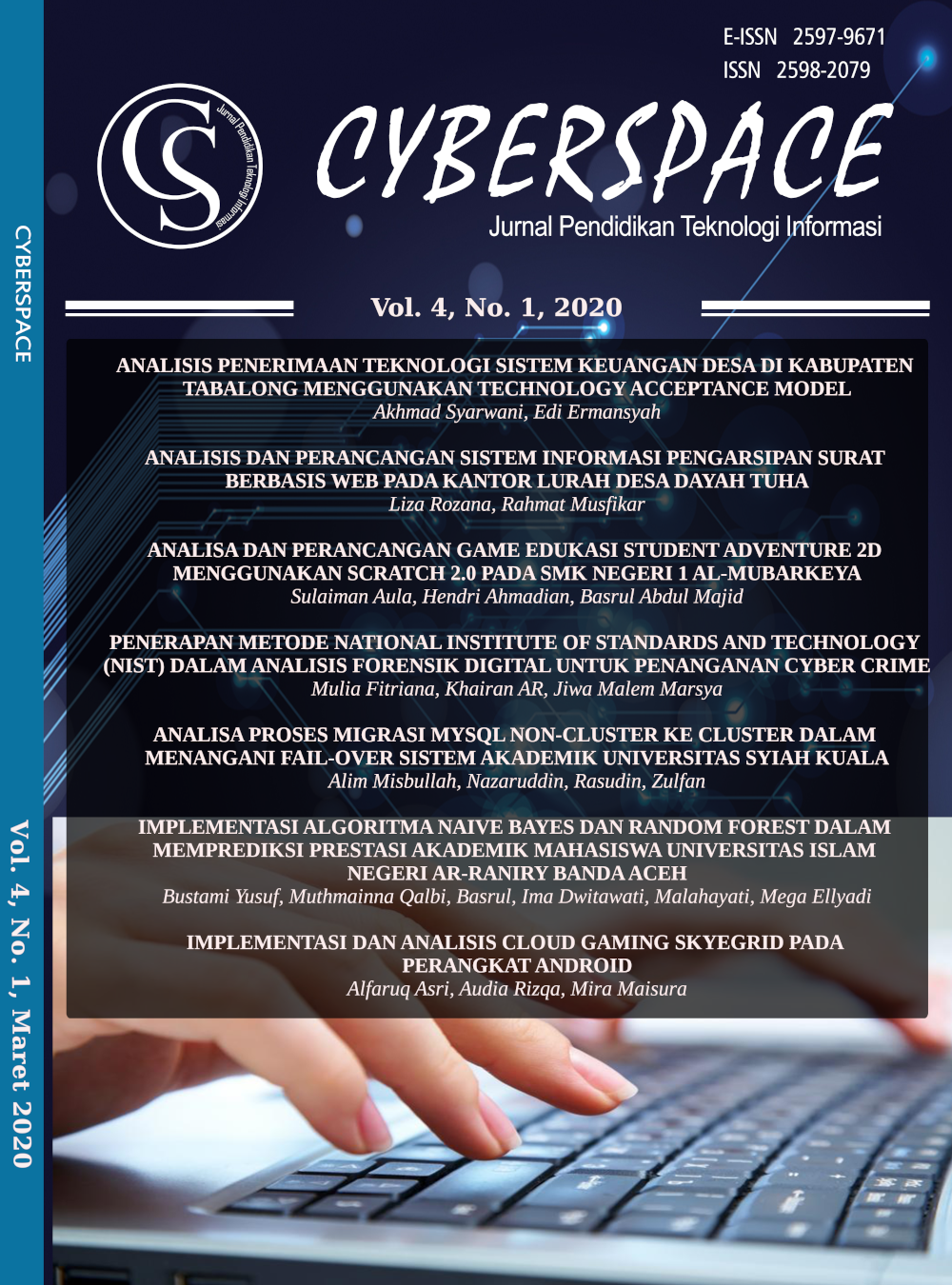IMPLEMENTASI ALGORITMA NAIVE BAYES DAN RANDOM FOREST DALAM MEMPREDIKSI PRESTASI AKADEMIK MAHASISWA UNIVERSITAS ISLAM NEGERI AR-RANIRY BANDA ACEH
DOI:
https://doi.org/10.22373/cj.v4i1.7247Keywords:
Naive Bayes, Academic Achievement, Random Forest, Prediction, MotivationAbstract
Academic achievement is determined by two factors, namely internal factors originating from within the individual in this case students and external factors that come from outside the individual or things that are influenced by the environment. There are many ways to find an academic achievement, one of which uses data mining which aims to predict or classify data using a classification algorithm. This study aims to 1) find out how to apply the Naive Bayes algorithm to student achievement, and 2) see the accuracy of the Naive Bayes algorithm to student achievement. This type of research is secondary data in the form of student data obtained from the information technology center and the Ar-Raniry UIN database. This research uses Naive Bayes algorithm and random forest algorithm. The results obtained from this study indicate the highest correlation value in the initial IP variable of r = 0.783 and the leave variable has a very weak correlation level of r = 0.054. The accuracy value of Naive Bayes algorithm after cleaning is 78.0% and Random Forest algorithm variable is 76.7%.
References
Lestari, Diah Indah. 2015. Skripsi. Analisis Data Siswa Menggunakan Klasifikasi Naive Bayes dalam Data Mining untuk Memprediksi Siswa diterima di PTN. Yogyakarta: Universitas Negeri Yogyakarta
Salmu, Supardi. Prediksi Tingkat Kelulusan Mahasiswa Tepat Waktu Menggunakan Naive Bayes. Prosiding Seminar Nasional Multidisiplin llmu, 2017, ISSN : 2087-0930.
Adnyana, I Made Budi. 2015. Prediksi Lama Studi Mahasiswa Dengan Metode Random Forest (Studi Kasus : Stikom Bali). CSRID Journal, Vol. 8 No. 3.
Susanto, Heri. 2014. Data Mining Untuk Memprediksi Prestasi Siswa Berdasarkan Sosial Ekonomi, Motivasi, Kedisiplinan Dan Prestasi Masa Lalu. Jurnal Pendidikan Vokasi Vol 4, No. 2
S.A. Zega. 2014. Penggunaan Pohon Keputusan untuk Klasifikasi Tingkat Kualitas Mahasisa Berdasarkan Jalur Masuk Kuliah.Yogyakarta
Imandasari, Tia dkk. 2019. “Algoritma Naive Bayes Dalam Klasifikasi Lokasi Pembangunan Sumber Air (Studi Kasus : STIKOM Tunas Bangsa Pematangsiantar)”. Prosiding Seminar Nasional Riset Information Science (SENARIS), ISSN: 2686-0260
Maulana Dhawangkara, Skripsi “Prediksi Intensitas Hujan Kota Surabaya Dengan Matlab Menggunakan Teknik Random Forest Dan Cart (Studi Kasus Kota Surabaya)” (Surabaya: Institut Teknologi Sepuluh November, 2016) Hal. 26.
Herlina. 2007.Labeling dan Perkembangan Anak. FOTA-Salman
Sarwono, Jonathan. 2012. Mengenal SPSS Satistic 20 : Aplikasi Untuk Riset Ekspreimental. Elex Media Komputindo. Jakarta.
Downloads
Published
Issue
Section
License
Authors who publish with Cyberspace Journal agree to the following terms:
- Authors retain copyright and grant the journal right of first publication with the work simultaneously licensed under a Creative Commons Attribution License that allows others to share the work with an acknowledgement of the work's authorship and initial publication in this journal.
- Authors are able to enter into separate, additional contractual arrangements for the non-exclusive distribution of the journal's published version of the work (e.g., post it to an institutional repository or publish it in a book), with an acknowledgement of its initial publication in this journal.
- Authors are permitted and encouraged to post their work online (e.g., in institutional repositories or on their website) prior to and during the submission process, as it can lead to productive exchanges, as well as earlier and greater citation of published work (See The Effect of Open Access).



















